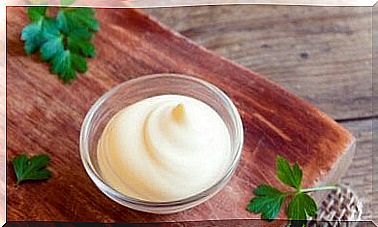Food Cross-contamination: How To Avoid It?

Avoiding food cross-contamination is essential in diseases such as celiac disease. It is the phenomenon whereby a person can be intoxicated by allergens or microorganisms present in a product or utensil that has come into contact with the food he has consumed.
We now present a series of tips to avoid cross-contamination of food. This reduces the risk of developing acute pathologies resulting from food poisoning or the manifestation of an allergy. Do not forget that in the kitchen, it is essential to maintain safety measures to protect health.
Recommendations to prevent cross-contamination of food
We present three aspects to consider when handling the foods that are later consumed. This reduces the risk of developing food poisoning.
Do not bring cooked and raw foods into contact
As a rule, the cooking process in food eliminates microorganisms and toxins that can trigger diseases. Scientific evidence suggests that nematodes, such as anisakis, are destroyed when subjected to low or high temperatures.
However, if we put a cooked food in contact with a fresh food containing harmful bacteria, the latter can migrate from one product to another and start reproducing. This increases the microbiological risk and leads to cross-contamination.
It is advisable to always reserve a space in the kitchen for cooked food away from where the food that has yet to be cooked is located. It often happens, for example, to mix cooked vegetables with still raw meat or fish.
This practice is risky for health, especially when products of animal origin have not been previously frozen or sanitized.

Do not use the same knife to cut different foods
Just as it is not convenient to put cooked and raw foods in contact, neither should the same utensil be used to handle them. A typical example of food cross-contamination is the sharing of utensils to manipulate foods that contain gluten in the preparation of dishes that will be consumed by a celiac person.
Research published in the Journal of Food Protection states that freshly washed cutlery should be used when preparing food for a celiac subject. In addition, they must not come into contact with foods that may contain gluten.
The same is true if the product in question contains bacteria that are pathogenic to humans. When handling different foods, it is essential to wash the knives and utensils used well to avoid these unpleasant inconveniences.
Pans and oils are also a transmission vehicle
The same care must be given to the pans and pots used for cooking, which must be sanitized after use. Bacteria or allergens that may still be present after cooking can be conveyed to the food that is then consumed.
Celiacs are the individuals most susceptible to this type of cross-contamination. In some cases, in fact, the bacteria manage to survive in the container and reproduce once they come into contact with the food that is introduced into it.
However, this situation is not common. For an allergen or bacterium to cause specific damage, it must be present in precise quantities. To confirm this, research published in the Journal of Food Protection indicates that it is rare for food poisoning to occur if the bacterial load is negligible.
In any case, celiacs are the most exposed to these situations if it is not possible to avoid cross-contamination of food. Only a few proteins are needed to trigger an autoimmune process in these individuals.

Pay attention to food hygiene to avoid cross-contamination
Suffering from food poisoning due to lack of precautions is more common than you think. It is therefore essential to follow the recommendations provided to reduce their incidence.
Extremely long-term hygienic excess could be detrimental, but surely, it’s much more dangerous to neglect it. Especially when handling food, it is necessary to avoid certain behaviors considered risky.
Do not forget that thorough cooking and well-executed freezing processes are able to neutralize many pathogenic organisms that can cause intoxication and acute ailments. Anisakis, for example, is annihilated by subjecting the fish to very low temperatures.
Be sure to follow the basic rules presented in this article. Also check the quality and hygiene of the utensils you use in the kitchen to handle food. Whatever precautions you take, it will not be wasted time.









